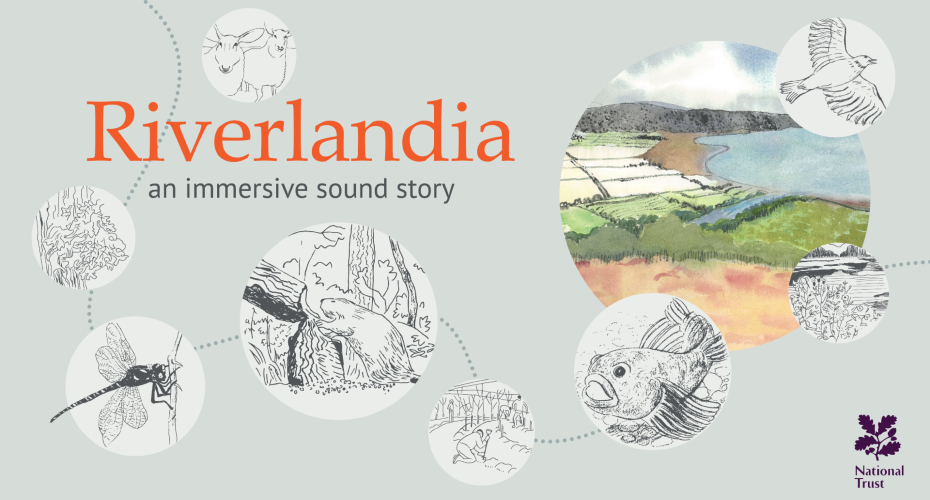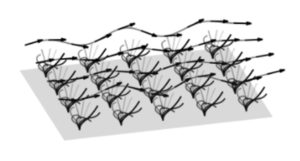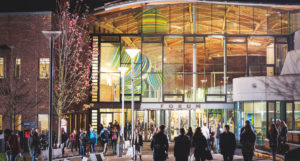Immersive sound story inspired by National Trust river restoration project to be launched at the British Library

The National Trust’s ecological restoration work on an Exmoor river valley has inspired an immersive fictional sound story that will be launched at the British Library in July as an installation.
Riverlandia is narrated by ten different inhabitants of the river valley, including the river itself, a beaver, an alder tree, a skylark, a dragonfly, and a sheep, and follows the story of a teenage girl who has struggled in mainstream school and finds meaning in nature.
The piece is inspired by the pioneering work of the Trust’s team at the 12,500 acre Holnicote Estate to make the landscape more biodiverse and resilient in the face of climate change and species extinction. This has included creating a new wetland to reconnect the river with the floodplain, reintroducing beaver, and helping to make farmland more wildlife-friendly.
Written and produced by Ellen Wiles, a novelist, multidisciplinary artist and Lecturer in Creative Writing at the University of Exeter, the story is narrated by a diverse line-up of actors, including Game of Thrones’ Gemma Whelan (the sheep), Bethany Antonia of House of the Dragon (the river), and comedians Mike Wozniak (the beaver), Spencer Jones (the ranger), and Tom Parry (the bullhead fish). An immersive spatial soundscape has been created by sound designer Nicholas Allan and developed collaboratively in harmony with the script.
Riverlandia can be experienced as an installation at the British Library from 7—11 July (via ticketed time slots) and will be made available online via the National Trust website.
“I’ve loved working with the National Trust to reimagine the Holnicote Estate through the eyes of the non-humans who are benefiting from its ecological work, as well as some of the humans,” said Ellen. “I’ve been working more and more with sound and acoustic ecology in my storytelling, and in making this work I wanted to create an immersive literary experience that could engage with a diverse audience, including people who might not normally visit Exmoor, or National Trust Estates.”
The project was developed after Ellen’s previous collaboration with Professor Richard Brazier and other science research colleagues in Exeter’s Centre for Resilience in Environment, Water and Waste (CREWW). CREWW had already worked closely with the Trust to support the reintroduction of beavers at Holnicote. It was funded by Frugi, who were keen to help promote the role of beavers and their ecosystem engineering skills.
Riverlandia was commissioned by the Trust in conjunction with an immersive literary soundwalk, titled Buzzard View, an audio experience exploring a route around the Holnicote Estate, and reflecting on its ecology and history, as well as the sensory quality of the environment. It can be listened to in situ, using QR codes on site, or as a virtual walk experience. Buzzard View was funded through the government’s Green Recovery Challenge Fund.
Ellen created both works through an extensive research and development process over 12 months, supported by National Trust staff, and involving interviews with staff, volunteers, rangers, and local farmers and residents.
Ben Eardley, Project Manager at the Holnicote Estate said: “We have had the opportunity to really focus on restoring nature at this very special place over the last few years, and it is amazing to be able to share this work through different creative ways to bring the stories of the nature and people living here to a much broader audience, wherever they live.
“I’m lucky enough to see and hear the sounds which are the results of our work every day – and if we can share this more widely then that can benefit everyone. We know that people who build a connection to nature, are more likely to care for it too.”
“I’m inspired by the work of scientists and organisations such as the National Trust in addressing the climate and ecological crises we face,” adds Ellen. “And I hope that imaginative and immersive approaches to storytelling can connect diverse audiences with this work in meaningful ways, inspiring empathy as well as informing, and perhaps countering the polarisation that often characterises discourse around the environment and land use.”



